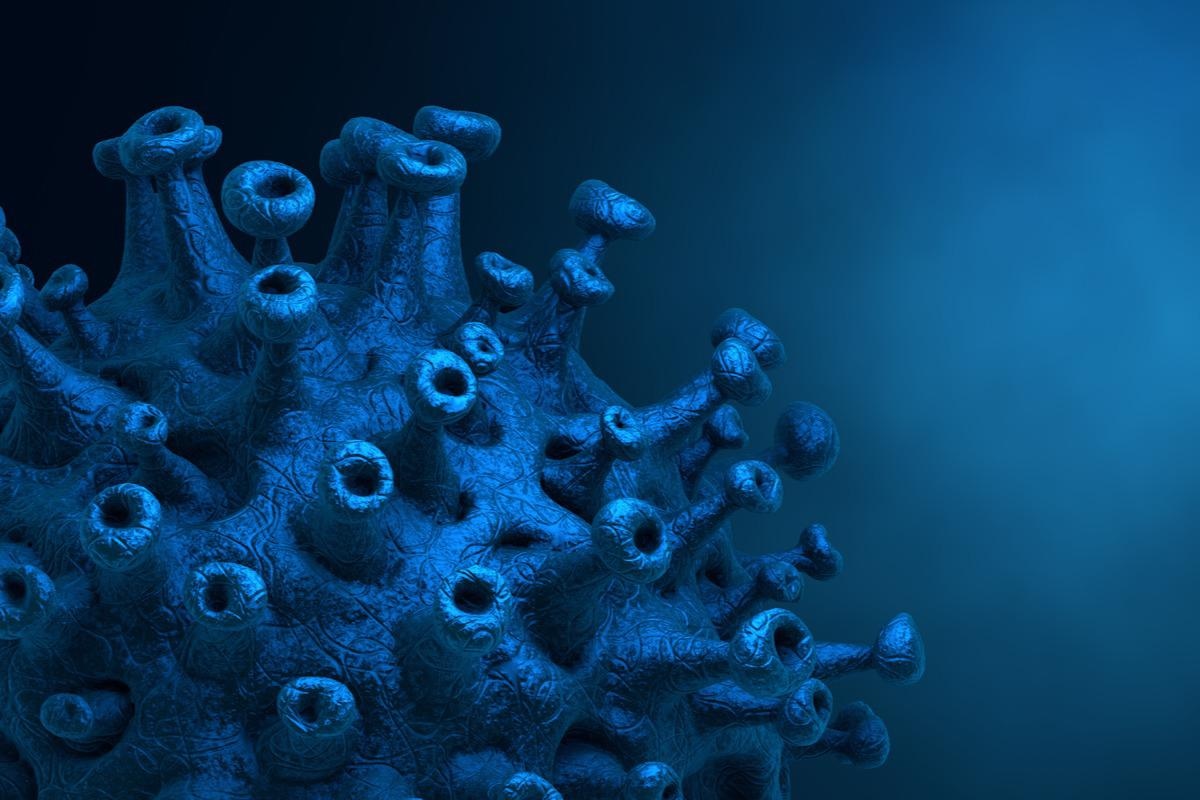Aminoglycoside antibiotic geneticin shows selective antiviral effect against SARS-CoV-2

In a recent study posted to the bioRxiv* preprint server, an interdisciplinary team of researchers from the United Kingdom (UK) and Switzerland elucidated antiviral activities of aminoglycoside geneticin against seven severe acute respiratory syndrome coronavirus 2 (SARS-CoV-2) variants using different cell lines and respiratory tissues.

At present, the US Food and Drug Administration (FDA) has approved three anti-viral drugs – remdesivir, paxlovid, and molnupiravir – apart from SARS-CoV-2 vaccines for coronavirus disease 2019 (COVID-19) treatment. However, the emergence of various new SARS-CoV-2 variants escaping COVID-19 vaccine-induced immunity highlighted the need to discover potential antiviral therapeutic agents with high efficacy against pan SARS-CoV-2 variants.
Programmed–1 ribosomal frameshifting (-1 PRF) is one of the strategies for the disruption of viral replication. Frame shifting element (FSE) of SARS-CoV-2 is a small region between open reading frame (ORF) 1a and ORF 1b.
Aminoglycosides antibiotics interact with secondary or tertiary structures of ribosomal ribonucleic acid (RNA), potentially inhibiting -1 PRF of SARS-CoV-2. Aminoglycoside geneticin proved to be effective against multiple viruses including Dengue virus, Bovine viral diarrhea virus, and Hepatitis C virus (HCV).
In the quest for antivirals targeting conserved structures of SARS-CoV-2, the authors of this study focused on aminoglycoside geneticin’s ability to bind SARS-CoV-2 RNA secondary structures.
Study design
In this research work, different strains of SARS-CoV-2 were isolated from clinical specimens, and antiviral assays were performed in VeroE6 and Calu-3 cell lines infected with SARS-CoV-2. Cell viability was measured using the MTT (3- (4, 5 -dimethylthiazol-2-yl) -2, 5-diphenyltetrazolium bromide) assay. Percentage inhibitions along with a cytotoxic concentration (CC5o), effective concentration (EC50), and confidence interval (CI) were determined. Dual-luciferase assay estimated the percentage ribosomal frameshift.
The researchers performed molecular modeling experiments through Asus WS X299 PRO software. RNA targeted library was used to test the druggability of the binding site. Molecular dynamic simulations for the RNA system were developed. Further cryogenic electron microscopy (Cryo-EM) structure and molecular docking identified the binding site on geneticin.
Findings
The findings of the study demonstrated higher dose-response activity of geneticin in the micromolar range in terms of EC50, EC90, and CC50 against all the different SARS-CoV-2 variants tested with no toxic effects at the observed doses.
Geneticin showed sustained antiviral activity in Calu3 cells (EC50 179.6 µM) with an absence of toxicity. It also elicited significant protection in MucilAir tissues of the human respiratory tract infected with the ancestral SARS-CoV-2 strain and the Omicron variant.
The researchers observed that geneticin treatment caused a marked reduction in the number of Vero-E6 cells expressing green fluorescent protein (GFP) infected with SARS-CoV-2 and also reduced the GFP intensity as compared to the untreated control group.
In the dual-luciferase assay, geneticin (50 µg/ml and 300 µg/ml) showed a marked reduction in -1 PRF efficiency compared to the untreated group. The effect on the frameshift efficiency was more marked at a lower dose of geneticin (50 µg/ml).
Cryo-EM RNA structure of the RNA FSE revealed the structure of the geneticin–FSE binding complex. This binding complex showed a λ-like tertiary arrangement of three stemmed H-type pseudoknot structure of three loops. From the 5’ end to the 3’ end, the structure starts with a slippery site, then by a first strand (S1), leading to the Loop (L1), and then a second strand (S2). From the second stem (S2), RNA strands formed a hairpin region (S3), followed by a J3/2 unpaired segment leading back to stem 2 and closed the stem 1-stem 2 pseudoknot. Binding site analysis showed the presence of three binding sites: binding site 1 (ring site), binding site 2 (J3/2), and binding site 3 (stem 2).
Docking results revealed a slightly higher affinity of geneticin for binding site 1 as compared to binding sites 2 and 3. Binding site 1 had a tunnel-like binding site that scored top-ranked binding pose and was more accessible and druggable than the other two binding sites.
Screening of RN- targeted library showed the presence of three -1 PRF binding compounds inhibiting SARS-CoV-2 viral replication with EC50 in the micromolar range and higher potency than geneticin. The three compounds were Compound 1 (AB-3234), Compound 2 (AB-3241), and Compound 3 (AB-3285) with EC50 of 13 µM, 25.2 µM, and 12.0 µM, respectively.
Further, Compound 3 (AB-3285) occupied a fully tunnel-binding site, forming a cation-pi with G19 and 2H-bonds with G19 and G18. Interestingly, the researchers noted that specifically NO-G18 interactions were crucial for the RNA-binding capacity of these three compounds.
Conclusion
The findings of the study demonstrated the effectiveness of geneticin against different SARS-CoV-2 variants at non-toxic concentrations. Geneticin acted via an early inhibition of viral replication and protein expression mediated by direct interaction with the -1 PRF region of SARS-CoV-2.
The authors identified a putative binding site for geneticin in the pseudoknot of frameshift RNA motif on SARS-CoV-2. Moreover, they screened additional RNA binding molecules interacting at the same site with increased potency compared to geneticin which paved the way for the development of potent antiviral drugs against SARS-CoV-2.
*Important Notice
bioRxiv publishes preliminary scientific reports that are not peer-reviewed and, therefore, should not be regarded as conclusive, guide clinical practice/health-related behavior, or treated as established information.
- Carmine Varricchio, Gregory Mathez, Laurent Kaiser, Caroline Tapparel, Andrea Brancale, Valeria Cagno. (2022). Geneticin shows selective antiviral activity against SARS-CoV-2 by targeting programmed -1 ribosomal frameshifting. bioRxiv. doi: https://doi.org/10.1101/2022.03.08.483429 https://www.biorxiv.org/content/10.1101/2022.03.08.483429v1
Posted in: Medical Research News | Medical Condition News | Disease/Infection News
Tags: Antibiotic, Assay, Cation, Cell, Compound, Coronavirus, Coronavirus Disease COVID-19, covid-19, Diarrhea, Drugs, Efficacy, Electron, Electron Microscopy, Fluorescent Protein, Food, Hepatitis, Hepatitis C, immunity, Luciferase, Microscopy, Omicron, Protein, Protein Expression, Remdesivir, Research, Respiratory, Ribonucleic Acid, RNA, SARS, SARS-CoV-2, Severe Acute Respiratory, Severe Acute Respiratory Syndrome, Syndrome, Vaccine, Virus

Written by
Sangeeta Paul
Sangeeta Paul is a researcher and medical writer based in Gurugram, India. Her academic background is in Pharmacy; she has a Bachelor’s in Pharmacy, a Master’s in Pharmacy (Pharmacology), and Ph.D. in Pharmacology from Banasthali Vidyapith, Rajasthan, India. She also holds a post-graduate diploma in Drug regulatory affairs from Jamia Hamdard, New Delhi, and a post-graduate diploma in Intellectual Property Rights, IGNOU, India.
Source: Read Full Article